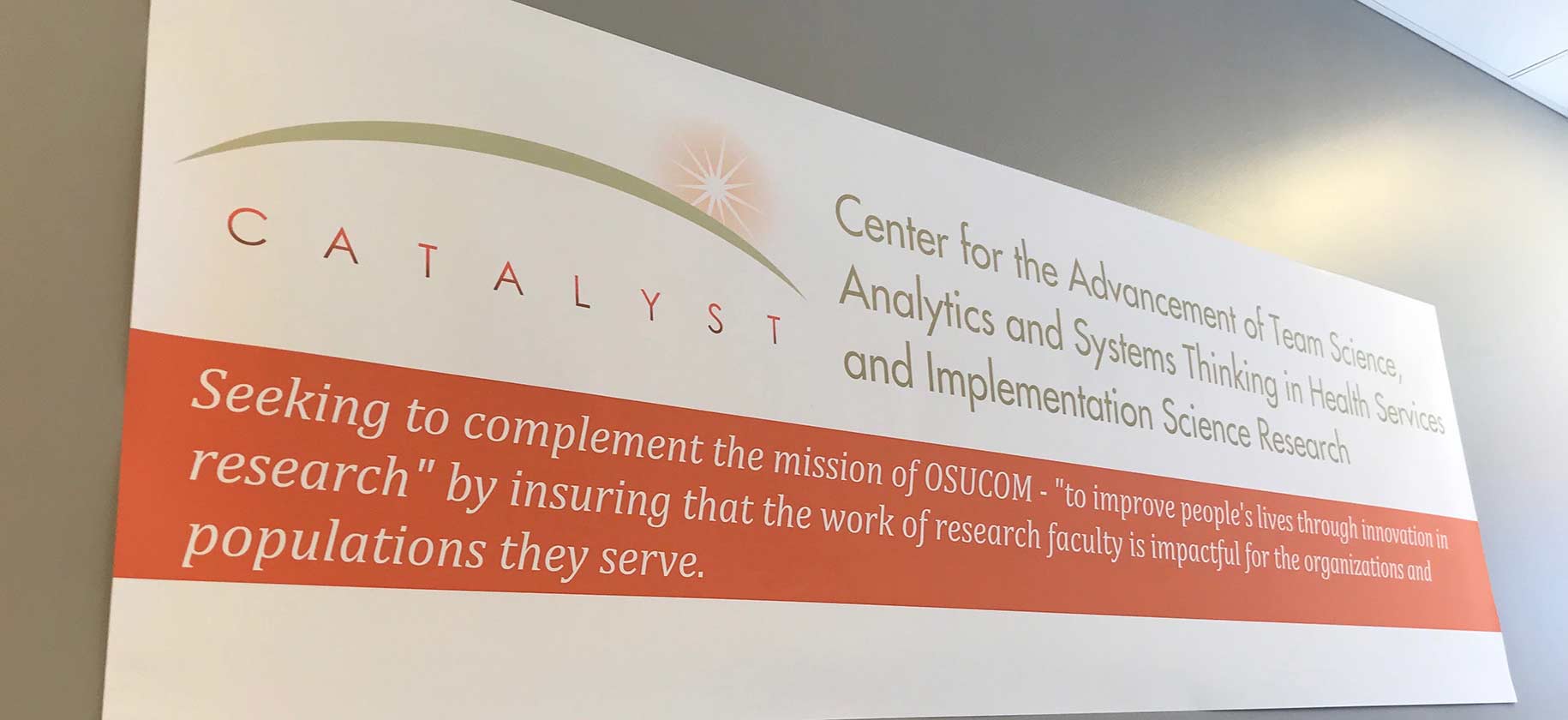
CATALYST researchers evaluating effectiveness of health care disparities simulation training programs
By Tyler Griesenbrock
CATALYST scientific editor
Published May 7, 2019
When a significant training program is developed – such as one to prepare health care professionals to serve Medicaid enrollees’ needs – it is important to ensure that training works as intended.
Researchers with CATALYST – the Center for the Advancement of Team Science, Analytics, and Systems Thinking in Health Services and Implementation Science Research – in The Ohio State University College of Medicine are taking part in a project to examine just that.
The Ohio Medicaid Technical Assistance and Policy Program (MEDTAPP) is a partnership between the Ohio Colleges of Medicine Government Resource Center, The Ohio Department of Medicaid, and the Ohio Council of Medical School Deans.
With this effort, the Medicaid Equity Simulation Project, MEDTAPP’s goal “is to advance health equity for the Medicaid population by increasing Medicaid provider cultural competency and awareness of implicit bias through training composed of virtual reality and simulated patient experiences,” according to the project website.
By working alongside academic medical centers such as The Ohio State University Wexner Medical Center and health sciences colleges such as Ohio State’s College of Medicine, the Ohio Department of Medicaid aims to address those goals.
“We have four different projects at Ohio State that were awarded,” said Megan Gregory, PhD, Co-Investigator, an Assistant Professor in the Department of Biomedical Informatics, and a faculty member with CATALYST. “Each one is led by a different faculty member.”
The projects involve a variety of disciplines: medicine, design, dentistry, linguistics, computer science, engineering, and more. The overall effort at Ohio State is spearheaded by Principal Investigator Sheryl Pfeil, MD.
The Ohio State projects, some of which also include faculty from Nationwide Children’s Hospital, all use simulation- or virtual reality-based training to prepare health professionals to reduce health care disparities. They are among 13 simulations across the state. The Ohio State projects focus on topics such as caring for patients with low socioeconomic status, with dementia, or who do not speak English.
Using a framework developed to measure the effectiveness of each program, Ohio State researchers will report back to the Ohio Department of Medicaid and the Government Resource Center on how the simulation projects are meeting expectations.
The goal is to “develop, implement and evaluate simulation-based and virtual reality training for Medicaid providers to better address health disparities and improve health equity,” Dr. Gregory said.
The evaluation at Ohio State includes interviews with stakeholders, in addition to quantitative analyses of training effectiveness data. To begin, the process employs a combination of telephone interviews, in-person interviews, and surveys targeted to learners to better understand training needs in the area of reducing health care disparities.
Researchers then move to pre- and post-training data collection and use the framework to complete an evaluation specifically tailored to the characteristics and program elements of each of the four projects.
After analyses are conducted and project findings are compiled, results and recommendations will be disseminated to support future work on simulation- and virtual reality-based training that aims to decrease disparities in care.
For more information about the work being done at CATALYST, visit go.osu.edu/catalyst.
The Medicaid Equity Simulation Project is funded by the Ohio Department of Medicaid and administered by the Ohio Colleges of Medicine Government Resource Center. The views expressed in this story are solely those of the authors and do not represent the views of the state of Ohio or federal Medicaid programs.

